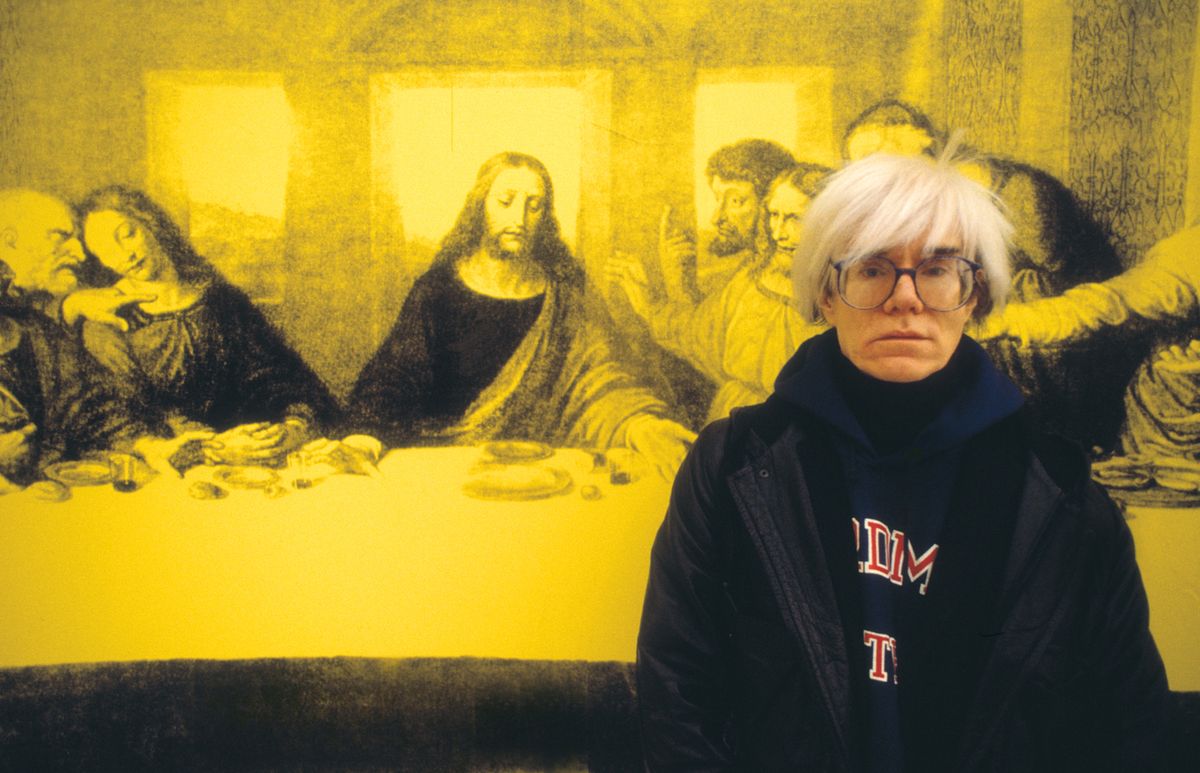Believe it or not, Andy Warhol was one of the most devout of all Modern artists. While references to his religion were plentiful in his diaries, published posthumously, they were scarce and tentative during his lifetime.
In Interview magazine in 1975, the US pop artist was asked if he had been to church that day. Yes, he replied; he had popped in. He admitted he took communion sometimes, even though “I never feel that I do anything bad.” Then, with archetypal Warhol blankness, he added: “I think it’s really pretty to go to church. The church I go to is a pretty church.”
It was the great art historian and Picasso biographer, John Richardson, who opened the world’s eyes to the extent of the Pope of Pop’s catholicism. In a eulogy following Warhol’s death in 1987, Richardson declared that he wanted to “recall a side of [Warhol’s] character that he hid from all but his closest friends; his spiritual side”.
Richardson evoked the decadent culture around Warhol (of which his subversive 1960s film Blow Job is a memorable example) when he said: “Those of you who knew him in circumstances that were the antithesis of spiritual may be surprised that such a side existed. But exist it did, and it’s key to the artist’s psyche.”
Warhol, Richardson continued, “took considerable pride in financing his nephew’s studies for the priesthood. And he regularly helped out at a shelter serving meals to the homeless and hungry… The knowledge of this secret piety inevitably changes our perception of an artist who fooled the world into believing that his only obsessions were money, fame, glamour…”
Just days before Richardson had delivered his eulogy, Warhol’s final exhibition of his lifetime had closed. It was shown in Milan in the gallery for an Italian bank, in what had been the refectory of the Palazzo delle Stelline, a space over the road from Leonardo’s The Last Supper, in the refectory of the Santa Maria delle Grazie church.
The show was filled with Warhol’s works playing with reproductions of Leonardo’s crumbling, faded masterpiece — though Warhol’s version, of course, reflected his fascination with consumerism, being based on mass-produced copies rather than the Renaissance master’s original.
With the hindsight afforded by the knowledge of Warhol’s catholicism, how fitting it was that the show that opened a month before his death reflected an obsession with an image of Christ’s final meal as he prepared for sacrifice.
Leonardo’s fresco had enormous personal significance for Warhol, too — his mother, the adored figure at the centre of his world, kept an image of it in her bible, and a reproduction hung on the Warhola family’s kitchen wall in Pittsburgh.
Warhol’s last years were dominated by portentous and religious imagery, which have accrued a moral dimension in the years since his death. There were his paintings based on ads for thrift-store figures of Christ — surely more than a deadpan commentary on conspicuous consumption. While in a series of prints made in 1984, he focused in on details of Renaissance masterpieces, including Leonardo’s Annuciation. The detail he selected features the vital, miraculous connection of the scene: the calm, sure hand of the angel and the recoiling lower arm of the Virgin, against a landscape.
Warhol also made repeated images in the early 1980s based on a humble wooden cross. Sometimes he printed them in grids; in others they were emblazoned on the canvas at just the size that would contain a human body. These were stark images of mortality, as viewers could imagine themselves crucified. Tellingly, Warhol showed his crosses alongside his paintings of guns and knives in a Madrid exhibition in 1982; the crosses, he said at the time, were for Spain’s Catholic king.
Even the fundamental characteristic of Warhol’s art can be viewed as connected to his faith. As the novelist Jeannette Winterson observed: “Repetition has a religious element too. Warhol was a devout Catholic, though eccentrically so. The rosary is repetition, the liturgy is repetition, the visual iconography of the Catholic Church depends on repetition.”
Indeed, is any artist more fitting for a Vatican retrospective?


